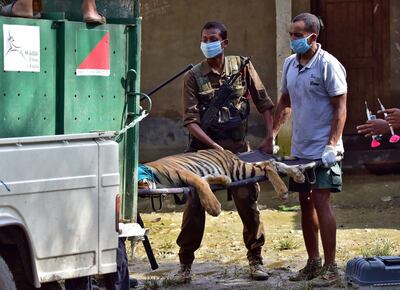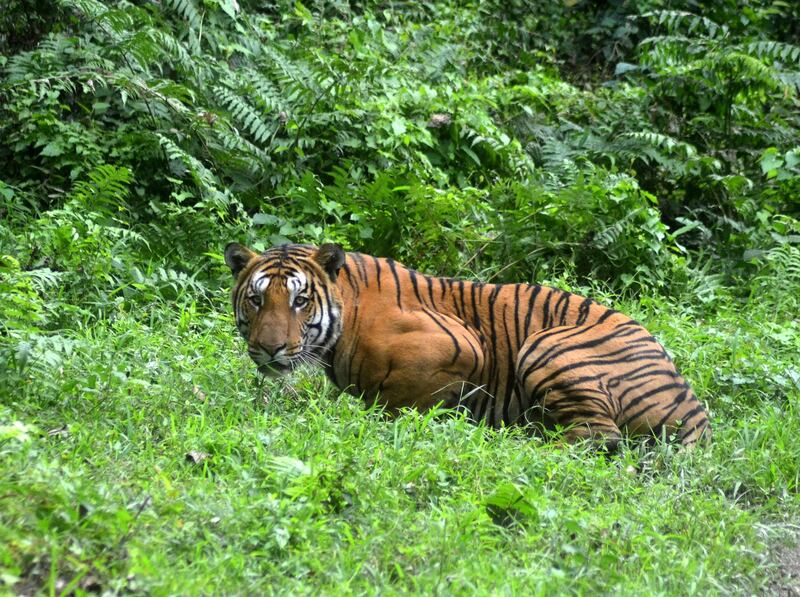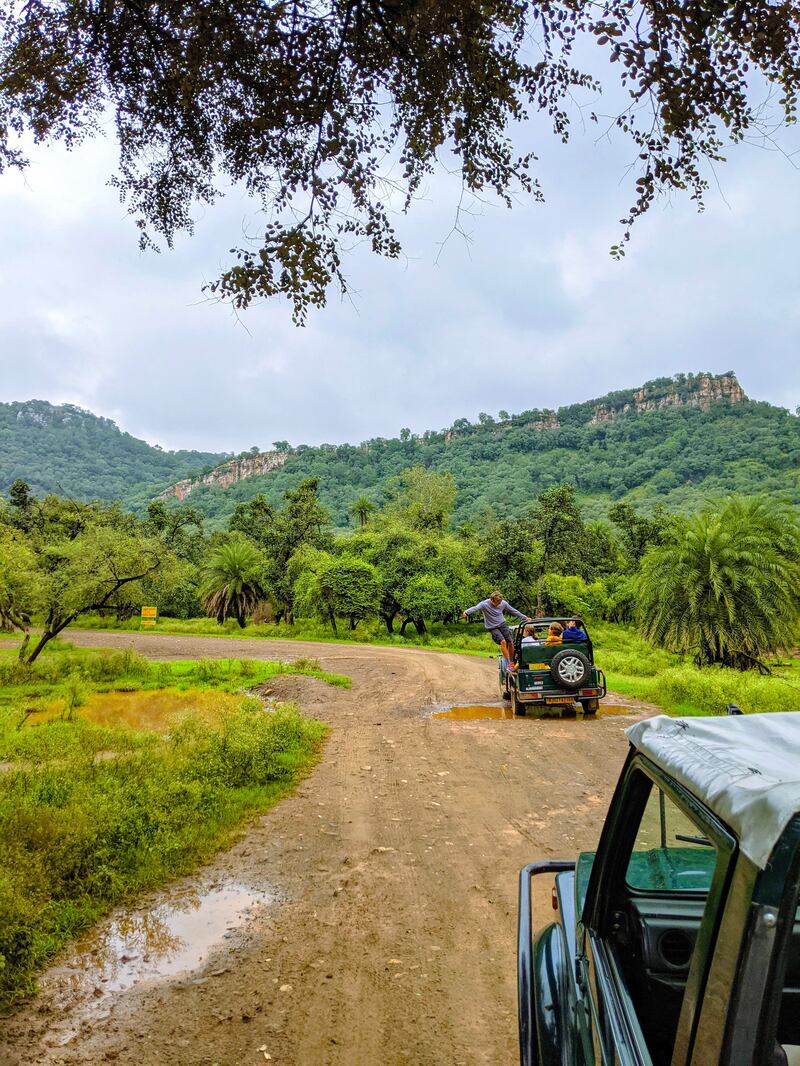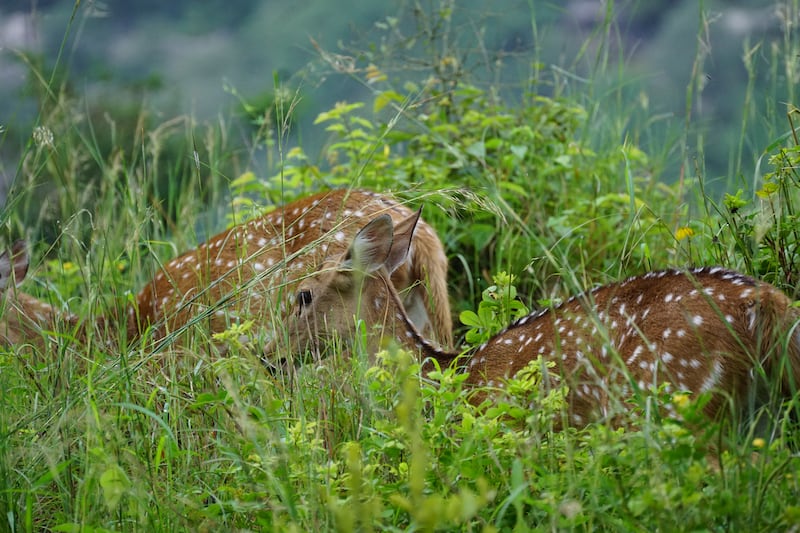Prime Minister Narendra Modi on Friday hailed India’s efforts in conserving tigers, but experts say the country needs to look beyond numbers and focus on increasing protected areas and preventing conflict with humans.
“I laud all those who are actively working to protect the tiger. It would make you proud that India has 52 tiger reserves covering over 75,000 square kilometres. Innovative measures are being undertaken to involve local communities in tiger protection,” Mr Modi said, on the occasion of International Tiger Day.
The tiger, India's national animal, is a protected species in the country.
India has 2,967 tigers in the wild, according to a 2019 census, or two-thirds of the worldwide population.
The number of tiger reserves has grown to 52 since the protected areas were set up in 1973 under Project Tiger, which aims to increase the population in the wild to 4,000 by the next decade.
Endangered species
It is estimated that more than 58,000 tigers roamed Indian forests nearly two centuries ago, but decades of hunting for sport and habitat destruction reduced their numbers to less than 2,000 by the 1970s.
Tigers were placed on the list of endangered species by the International Union for Conservation of Nature in 1975.
New Delhi has invested heavily in increased vigilance and conservation measures under Project Tiger.
Last year, the Environment Ministry allocated three billion rupees (about $38 million) for the project.
Efforts include improved safety and stricter wildlife policies, the use of information technology and camera traps for monitoring and surveillance, profiling and photographing each animal, and in some cases relocating villagers from catchment areas.
It also built the world’s largest underpass in Madhya Pradesh — a state with about 550 of the country's tigers — so the big cats can safely cross a highway.
“These numbers represent the great amount of effort and we have made progress in certain places,” Abishek Harihar, a population ecologist and deputy director of Panthera, a wild cat conservation group, told The National.
Poaching threat
Despite the government's efforts, tigers are still an endangered species because of the threat from poaching and shrinking habitats that cause human-animal conflicts.
Junior environment minister Ashwini Choubey said this week that more than 329 tigers have died in the country due to poaching and natural and unnatural causes in the past three years.
At least 75 deaths have been recorded this year.
Video: Delhi police nab group of suspected tiger poachers

For the three-year period, 68 tiger deaths were attributed to natural causes, five to unnatural causes, 29 to poaching and 30 to “seizure”. More than 200 deaths are still being investigated.
Seizure is when tiger body parts are found, and it is presumed that the animal is dead.
In central Madhya Pradesh, more than 1,000 of the animals have been killed in the past decade, according to the National Tiger Conservation Authority, a government body.
Poaching of tigers for body parts — mainly claws, teeth, bones and fur — continues because of the demand in illegal international markets, particularly in China where they are used in traditional medicines despite a ban.
Experts say the government needs also needs to focus on eastern and north-eastern parts of the country that once were natural habitats of the tiger.
“There are many areas that still don’t have tigers, especially eastern, central Indian landscapes like Jharkhand, Odisha and Chhattisgarh states. There are extensive forest covers but little to no tiger population,” Mr Harihar said.
He blamed the lack of political will due to decades of violent insurgency in these states, but also the shrinking habitats of animals like deer, the natural prey of tigers.
Conflict with humans
Despite all this, India remains a beacon of hope for tiger conservation.
It is the only country that managed to achieve the target of doubling its tiger population by 2022, after joining a global conservation effort with 13 countries — including Bhutan and Nepal — in 2010. In 2006 when the number of tigers in India had been down to just over 1,400.
But the growing number of tigers has brought a significant increase human-animal conflict in the country of 1.3 billion people.
Tigers have killed more than 100 people in India over the past three years, Mr Choubey told Parliament in April.
The western state of Maharashtra state, which has nearly 400 tigers and five tiger reserves, recorded the most deaths, with 56.
In Uttar Pradesh, 17 people were killed in tiger attacks: eight in 2019, four in 2020 and five last year.

Experts attribute the conflict to shrinking habitats due to developmental projects, overpopulation in reserves, and human settlements near protected areas resulting in the tigers straying in search of food.
“Most tigers in reserves have less protected [buffer] habitat around as they are either surrounded by human settlements or disrupted by infrastructure development projects.
“If a tiger loses a territorial fight and is ousted from the area there is a greater chance that it would not survive, or prey on livestock in a nearby human habitat,” Mr Harihar said.
He said measures to pre-empt or reduce conflict and community engagement were “very critical”.
“Local community and government needs to work together [to create] strong policies around common lands to be used by people and clarity of what objectives the areas will fulfil,” he said.
















